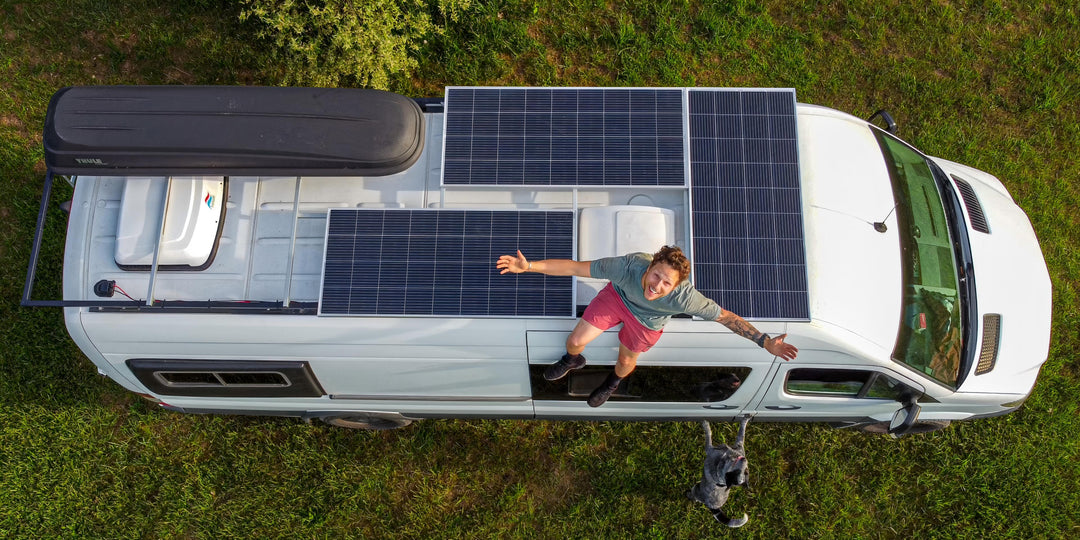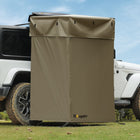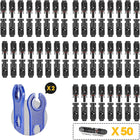How Long Do Solar Panels Last? The Real Lifespan of Solar Panels

Solar panels have become a game-changer for those who love off-grid living, whether it’s camping under the stars, sailing the open seas, or making a tiny house your cozy, energy-efficient home. But if you’re investing in solar panels, one big question probably comes to mind: “How long do solar panels last?”
The good news is, solar panels are built to last for decades. However, the lifespan of solar panels is influenced by various factors, including the quality of materials and the level of maintenance they receive. In this blog, we’ll explore the typical lifespan of solar panels, the factors that can affect their durability, and some practical tips to extend their life—so you can keep enjoying clean, renewable energy for years to come.
How Long Do Solar Panels Last?
The typical lifespan of solar panels is around 25 to 30 years. However, this doesn’t mean your panels will stop working after 30 years—they’ll simply become less efficient. Most panels lose about 0.5% to 1% efficiency per year, meaning that after 25 years, they’ll still produce around 75%–87.5% of their original output.
For example, if your solar panel initially generated 100 watts of power, it might still produce 75–87 watts after 25 years.
What Factors Affect Solar Panel Lifespan?
Although solar panels are designed for durability, several factors can affect both their lifespan and performance efficiency. Let’s break it down:
1. Quality of the Solar Panels
Not all solar panels are created equal. Higher-quality panels from reputable manufacturers typically last longer and degrade more slowly. Look for panels with strong warranties, as this often reflects the manufacturer’s confidence in their product.
2. Environmental Conditions
Solar panels are built to withstand various weather conditions, but extreme environments can accelerate wear and tear:
-
Camping: Portable solar panels used during camping are often exposed to dust, dirt, and frequent handling, which can impact their durability over time.
-
Boating: Saltwater environments can cause corrosion if the panels are not specifically designed for marine use.
-
Tiny Homes: Stationary panels on tiny homes are exposed to various weather elements, including snow, hail, and strong winds.
3. Maintenance and Care
Proper maintenance can significantly extend the lifespan of solar panels. Dirt, dust, bird droppings, and debris can block sunlight, reducing efficiency. Neglecting regular maintenance can also lead to long-term damage.
4. Installation Quality

Proper installation is crucial for maximizing the lifespan of solar panels. Panels that are securely mounted and properly angled will not only produce more energy but will also be less susceptible to damage from wind or shifting.
5. Type of Solar Panel
There are different types of solar panels—monocrystalline, polycrystalline, and thin-film. Monocrystalline panels are generally the most durable and efficient, making them a popular choice for off-grid applications like camping, boating, and tiny homes.
How to Extend the Solar Panel Lifespan
Want to get the most out of your solar panels? Follow these simple tips to maximize their lifespan:
1. Choose the Right Panels
If you’re a camper or boater, consider investing in portable solar panels that are specifically designed for rugged outdoor use. Look for features like waterproofing, corrosion resistance, and durable frames. For tiny homes, stationary panels with high efficiency and strong warranties are your best bet.
Dirt, dust, and debris can block sunlight and reduce your panels’ efficiency. For stationary panels on a tiny home, clean them every few months or after heavy storms. For portable panels used in camping or boating, wipe them down after each trip. Use a soft cloth or sponge with water and mild soap—avoid abrasive materials that could scratch the surface.
3. Make Sure Your Solar Panels Are Regularly Managed and Maintained
To extend the lifespan of solar panels, regular maintenance is key. Inspect them frequently for cracks, scratches, or loose connections, especially after exposure to harsh environments like salty air or rough handling. Store portable panels in a cool, dry place with a protective cover when not in use, and monitor their energy output to catch any performance drops early. If your panels are installed on a tiny home or boat, ensure they’re securely mounted, weatherproof, and protected against corrosion in marine environments. With proper care, your solar panels will power your adventures for years to come!
Final Thoughts

Solar panels are a durable, long-term solution for sustainable energy, with a typical solar panel lifespan of 25–30 years. By choosing high-quality panels, maintaining them regularly, and protecting them from damage, you can enjoy clean energy for decades. Whether you’re camping, boating, or living in a tiny home, solar panels are a reliable companion for all your off-grid adventures.
Here is the best part: If you buy our solar panels now and use the limited-time discount code: SEOBV5, you can enjoy an extra 5% off!
If you have more questions about the lifespan of solar panels or need help choosing the right product, feel free to reach out—we’re here to help you make the most of your solar energy journey!
FAQs
1. What happens when solar panels reach the end of their lifespan?
When solar panels reach the end of their lifespan (typically 25–30 years), they don’t just stop working—they simply become less efficient, producing less energy than they did when new. Many panels can still operate at reduced capacity for years beyond their warranty period. If you decide to upgrade your solar panel system, you can choose from our solar panel collection for a better one.
2. Why Do Solar Panels Degrade?
Solar panels degrade over time due to a combination of natural wear and environmental factors. The most common reasons include:
UV Exposure: Prolonged exposure to sunlight can slowly break down the materials in the panels, reducing efficiency.
Weather Conditions: Extreme heat, freezing temperatures, or heavy snow can put stress on the panels, leading to gradual wear.
Moisture and Corrosion: In humid or marine environments, moisture can seep into the panels, causing corrosion, especially if they’re not properly sealed.
Microcracks: Tiny cracks in the solar cells, often caused by physical stress or temperature fluctuations, can reduce energy output over time.
3. How do I know if my solar panels need replacing?
If your solar panels show visible damage (such as cracks or discoloration) or if their energy output drops significantly despite regular cleaning and maintenance, it may be time to replace them. You can also consult a professional to assess the condition of your panels and determine whether repair or replacement is the best option.






















































































































































































































